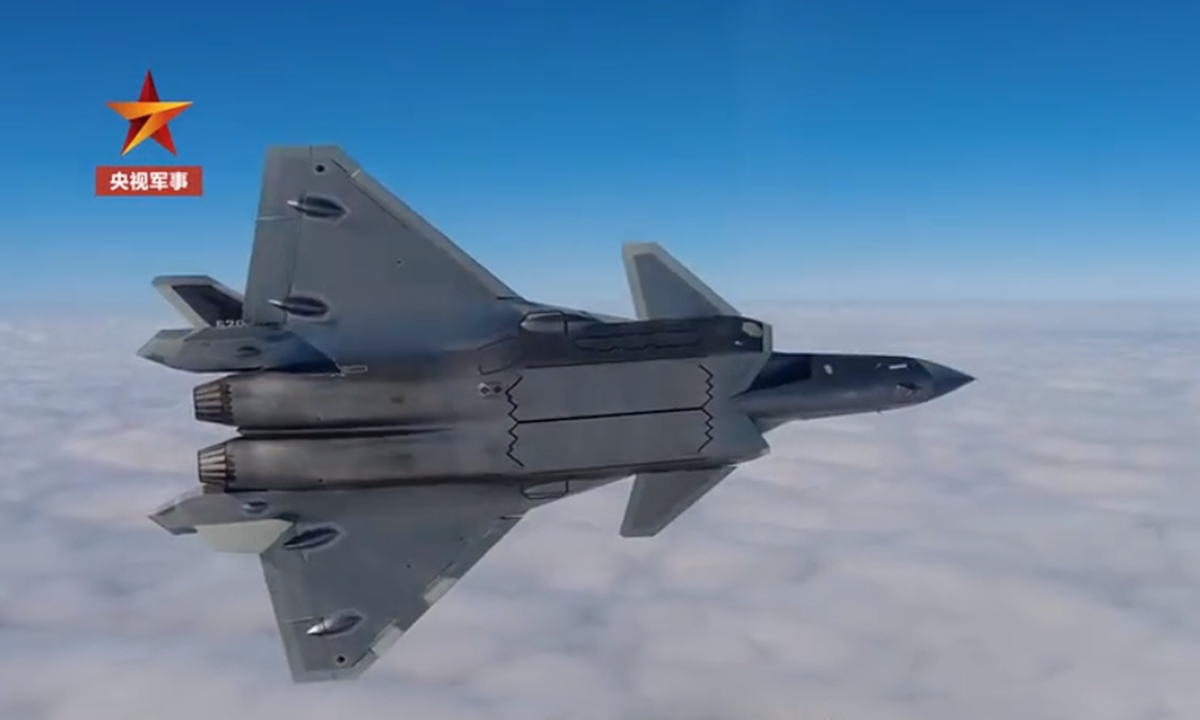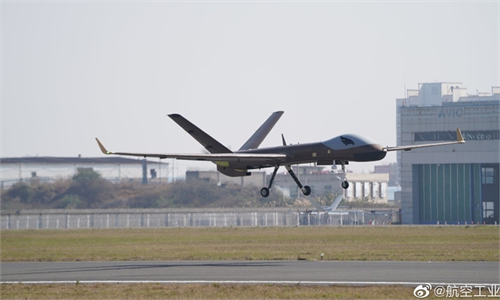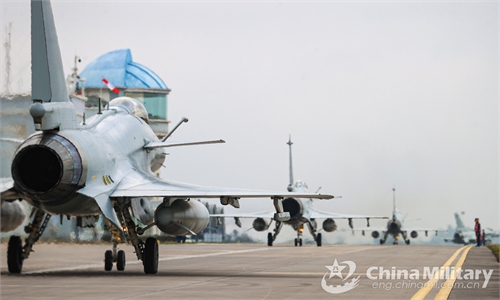
A J-20 stealth fighter jet attached to the Chinese People's Liberation Army Eastern Theater Command takes part in exercises. The aircraft is not equipped with a Luneburg lens, a radar reflector used to make a stealth aircraft visible to others in training or non-combat flights. Photo: Screenshot from China Central Television
China's domestically developed J-20 stealth fighter jet could in the future be equipped with directed-energy weapons, and it can also spawn variants for early warning, unmanned flight and drone control, military experts predicted after the aircraft received concentrated media coverage over the past week.
"I believe our industrial departments can turn some of our ideas into reality, including those from the current trend of aviation main battle equipment," Wang Mingliang, a Chinese military expert, was quoted as saying in a China Central Television (CCTV) program on Saturday.
The J-20 could be equipped with directed-energy weapons, or it could be fitted with more powerful radar and fire control systems and become a small early warning aircraft, Wang predicted.
It is also possible that the J-20 could become capable of unmanned flight, Wang said, noting that the J-20 could also conduct coordinated operation with drones by leading them, or commanding a drone swarm in combat.
The J-20 is now equipped with domestically developed engines, but it is expected to get even more powerful domestic engines in the future, and this will enable the J-20 to carry more payload and carry out more types of missions, Wang predicted.
Wang made the remarks when asked about his expectations on the future development of the J-20, after the program rounded-up the recent concentrated media coverage of the J-20, including intense nocturnal combat drills and interviews with pilots.
In early 2020, state broadcaster CCTV reported that China was developing an airborne laser attack pod. Chinese defense firms have also publicly displayed laser defense weapon systems at exhibitions, like the LW-30, which could use a directional-emission high-energy laser to intercept aerial targets.
Lasers are a great tool for aerial interception because there is no time delay, but it requires a large amount of energy to be effective and that is the issue that must be addressed for it to be mounted on an aircraft, analysts said.
Foreign media reported in November 2021 that the twin-seat variant of the J-20 made its maiden flight at the time.
An extra pilot on the twin-seat fighter jet could be utilized in more complicated combat situations, like to control loyal wingman-style drones, which will accompany the manned fighter in flight and carry different types of payloads for a wide variety of missions, including ground and surface attacks, air-to-air combat and electronic disruption, Wang Ya'nan, chief editor of Beijing-based Aerospace Knowledge magazine, told the Global Times in a previous interview.
Wang Ya'nan predicted that combat data from the second seat could be gathered, analyzed and used to train artificial intelligence, which could eventually replace the second pilot.
These are in line with general trends of warplane development worldwide, as countries like the US are also exploring some of the related technologies, another Beijing-based military expert told the Global Times on Sunday, requesting anonymity.
China is making concrete steps to make these sci-fi-looking concepts a reality, the expert said.
Beyond upgrades for J-20s, even better warplanes of a next generation are expected to replace them in the future, analysts said.




